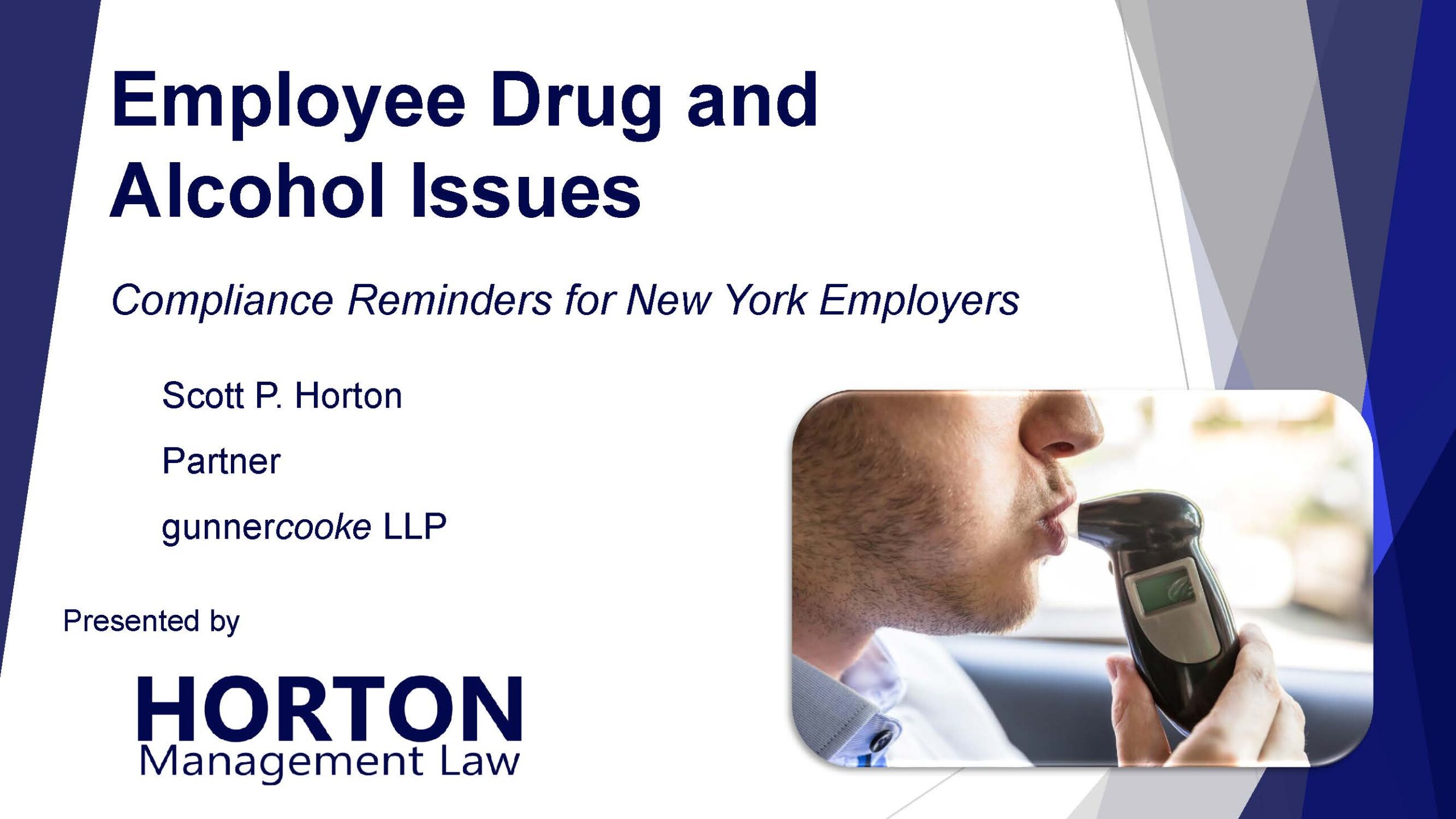As the year ends, we again review the most viewed New York Management Law Blog posts from this year. Did you miss any of the top posts of 2018?
These posts reflect some topics that most interested New York employers in 2018. Do they also suggest what will be top of mind in 2019?
Curious about last year? Click to see what posts made the list in 2017.
Like last year, our post reminding employers of increases to both minimum wage and the salary threshold for overtime exemptions under state law caught readers’ eye.
Remember these changes take effect on December 31, 2018, not January 1st. If you haven’t adjusted accordingly yet, don’t delay any longer!
And there are still more increases scheduled for the years to come. This post includes charts showing those planned increases.
Sexual Harassment Draws More Attention
Well-publicized harassment allegations beginning in October 2017 put sexual harassment prevention on the top of our minds this year. Both the federal and New York state governments took deliberate action to address the unfortunate reality.
In April 2018, the New York Legislature enacted extensive legal requirements aimed at workplace sexual harassment. These included the obligation that all employers in the state adopt written sexual harassment policies and provide annual sexual harassment prevention training to all employees.
Employers were eager to learn more about what the New York Department of Labor would expect from them to meet the policy and training requirements. This made “First Look: NYS Model Sexual Harassment Policy & Training” one of our top posts of 2018. When the DOL updated its guidance closer to the October 9, 2018 effective date, we likewise offered an update.
In October, we also received telling data from the U.S. Equal Employment Opportunity Commission (EEOC). We examined this in “EEOC Releases 2018 Sexual Harassment Statistics.” The EEOC initially reported that after steadily declining over the previous decade, sexual harassment charges went up more than 12% in the fiscal year ending September 2018. In “EEOC: 2018 Sexual Harassment Data Even Worse” we discussed the final numbers showing a 13.6% increase.
The FMLA Is Always a Hot Topic
All the hype in 2017 was about the launch of New York’s Paid Family Leave Program. In 2018, the federal Family & Medical Leave Act (FMLA) turned 25 years old. But employers remain interested in learning more about what it means and how it works.
One of the most viewed posts of the year contrasted these two significant legal regimes. “New York Paid Family Leave vs. FMLA” takes a look at employer coverage, employee eligibility, qualifying circumstances, compensation, and other issues under these laws.
And after a year of learning when an employee might have rights under the New York Paid Family Leave, employers became even more interested in double checking “Who Is an FMLA Eligible Employee?”
Drugs in the Workplace
Another issue that hasn’t gone away is employee drug use. Amidst a continuing national debate over the legalization of marijuana, readers were interested in what existing employment laws say about drugs generally.
What Does the Drug-Free Workplace Act Require?
This federal law doesn’t go as far as most people probably think. First, it only applies to businesses that have sufficiently large contracts with the federal government.
The Drug-Free Workplace Act requires these covered employers to adopt a drug-free workplace policy and establish a drug-free awareness program. However, it does not force these companies to fire employees who bring drugs to work or work under the influence of illegal drugs.
Drug Testing New York Employees
Employers in New York (and most other states in the U.S.) have broad rights to test employees for drug use. But many sources of law touch on the subject. That’s probably why this post was so popular with readers trying to determine their rights and obligations in various situations. (It was the #1 most viewed post on the New York Management Law Blog in 2018!)
New York employers don’t have to let employees take paid vacations. But if they do offer a vacation benefit, the parameters must be clearly described in writing.
If you haven’t done so recently, now’s a good time to review your vacation pay policy. Use this post as a starting point.
You’d be surprised how many people asked that question in 2018. (I was.) This was actually our second most viewed post of the year. So, what is it?
Signed by President Lyndon B. Johnson in 1965, this Executive Order imposes anti-discrimination and affirmative action requirements upon covered federal contractors. For example, companies with more than 50 employees and a contract with the U.S. government for at least $50,000 must maintain written affirmative action plans.
Although the Executive Order remains in place, the federal Office of Federal Contract Compliance (OFCCP), which oversees Executive Order 11246, has occasionally made the news over the past year or so. It recently announced several new policies on November 30, 2018.
What Are Employees Up To?
Two other top posts of 2018 addressed the reality that your employees don’t always want to be working (at least, for you).
Should You Let Employees Watch the World Cup?
Though less popular in the United States, the 2018 FIFA World Cup was one of the biggest global events of the year. For one month this summer, fans around the world cheered their favorite soccer nations. Before the contest began, we considered some pros and cons of letting employees watch the matches during work time.
Your Employee Has a Side Hustle
Many employees with regular full- or part-time jobs are also working on a personal business venture on the side. This is not necessarily good or bad in itself. Situations vary. But this post raised many legal considerations for employers ranging from conflicts of interests to federal leave laws.
Don’t Stop at the Top Posts of 2018!
I hope you find it helpful to look back at what happened last year, but you should also look forward. Please continue to follow the New York Management Law Blog in 2019.
The best way (in my opinion) to stay informed of the hottest topics in New York labor and employment law is to subscribe to our monthly email newsletter. It not only recaps our recent blog posts, but also announces upcoming free webinars that help you stay in compliance.
See you in 2019!


